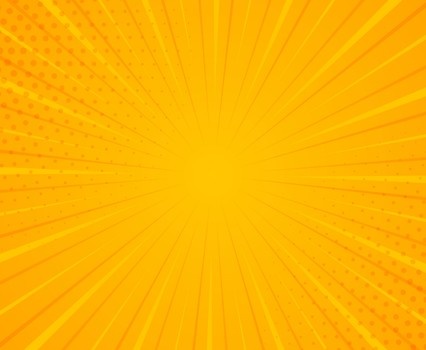Why Is Naruto Still the First Manga Americans Think Of? The Psychology of Top-of-Mind Recall

The U.S. manga market has experienced significant growth over the past decade, driven by the increasing crossover appeal of anime, global fandom culture, and the promotion of manga-based content by streaming platforms such as Crunchyroll and Netflix. As manga becomes more integrated into mainstream entertainment, understanding brand perception has become essential for publishers and content distributors. The readership of manga in the U.S. encompasses a diverse range of age groups, with Gen Z and Millennials constituting the largest segment of consumers.
When evaluating brand awareness, three primary recall categories are typically employed: Top of Mind (TOM), Unaided Awareness, and Aided Awareness. Top of Mind awareness refers to the first manga brand that comes to a consumer's mind when prompted. Recent perception studies indicate that “Naruto” is the leading top-of-mind brand among U.S. consumers, attributed to its long-standing presence, extensive merchandising, and cultural integration. Approximately 28% of respondents identified Naruto as the first brand they associate with manga, followed by “Dragon Ball” at 17% and “One Piece” at 13%, the latter benefiting notably from recent global campaigns and a Netflix adaptation. These statistics underscore the deep emotional and nostalgic ties many American readers have with shonen manga that gained popularity in the early 2000s.
For complete details write your queries at: sales@marksparksolutions.com
Unaided Awareness assesses brands that respondents mention on their own, without prompting, capturing a broader view of mental availability. In this category, “My Hero Academia” ranked highly, with 34% of respondents recognizing it among their top-known brands, likely propelled by the success of recent anime seasons and digital engagement. “Attack on Titan” was next at 29%, demonstrating its extensive market penetration through streaming and pop culture discussions. Established titles like “One Piece,” “Naruto,” and “Dragon Ball” continued to dominate unaided mentions, reflecting their enduring brand equity. Notably, newer series such as “Jujutsu Kaisen” and “Demon Slayer” have gained traction, with unaided awareness levels at 15% and 19%, respectively, particularly among younger, digitally native consumers accessing content through platforms like Viz Media, Shonen Jump app, or Manga Plus.
Aided Awareness evaluates consumer recognition when presented with a list of manga brands, helping to identify latent familiarity that may not manifest spontaneously. In this dimension, classic brands like “Naruto,” “Dragon Ball,” and “One Piece” enjoyed recognition levels exceeding 80%. “My Hero Academia” followed closely at 75%, and “Attack on Titan” reached 70% in aided awareness. Meanwhile, “Demon Slayer” and “Jujutsu Kaisen” showed promising growth, achieving aided awareness levels of 63% and 57%, respectively. This increase in familiarity for newer titles can be linked to strategic localization efforts, effective licensing, and improved streaming access.
Additionally, insights within the "Other Mentions" category reveal niche or cult-following manga brands that, while not mainstream, command substantial loyalty from specific segments. Titles like “Tokyo Revengers,” “Chainsaw Man,” and “Bleach” recorded moderate awareness levels, particularly among readers aged 18–24. Interestingly, despite its age, “Death Note” maintains a significant cultural presence, with 12% unaided awareness and 52% aided recognition, aided by its continued relevance in meme culture and past adaptations. Furthermore, publishers such as Viz Media, Kodansha, and Yen Press are increasingly being recognized as distinct manga brands rather than merely content distributors, indicating a shift toward brand loyalty associated with publishers alongside series engagement.
Another important consideration is the impact of digital platforms on brand perception. Consumers who discover manga through digital applications tend to exhibit higher unaided awareness of newer brands like “Chainsaw Man,” “Spy x Family,” and “Blue Lock.” In contrast, print-first readers are more connected to legacy titles. The retail presence, particularly in outlets like Barnes & Noble, Books-A-Million, and Walmart, significantly influences brand recall, with prominent in-store displays correlating strongly with TOM and unaided awareness metrics.
Survey Methodology and Sample Details for U.S. Manga Brand Perception Study
|
Parameter |
Details |
|
Sample Size |
1,200 respondents |
|
Sampling Method |
Stratified Random Sampling |
|
Target Respondents |
Manga readers aged 13–45 years, across urban and suburban U.S. areas |
|
Geographic Scope |
United States – Nationwide, with proportional representation from all regions (Northeast, Midwest, South, West) |
|
Data Collection Method |
Online Survey (Mobile & Desktop) |
|
Survey Period |
June 1 – June 15, 2025 |
|
Margin of Error |
±2.8% at a 95% confidence level |
|
Key Screening Criteria |
Must have read at least 1 manga in the past 6 months |
|
Question Types |
- Open-ended (for TOM and unaided awareness) |
No FAQs available at the moment.